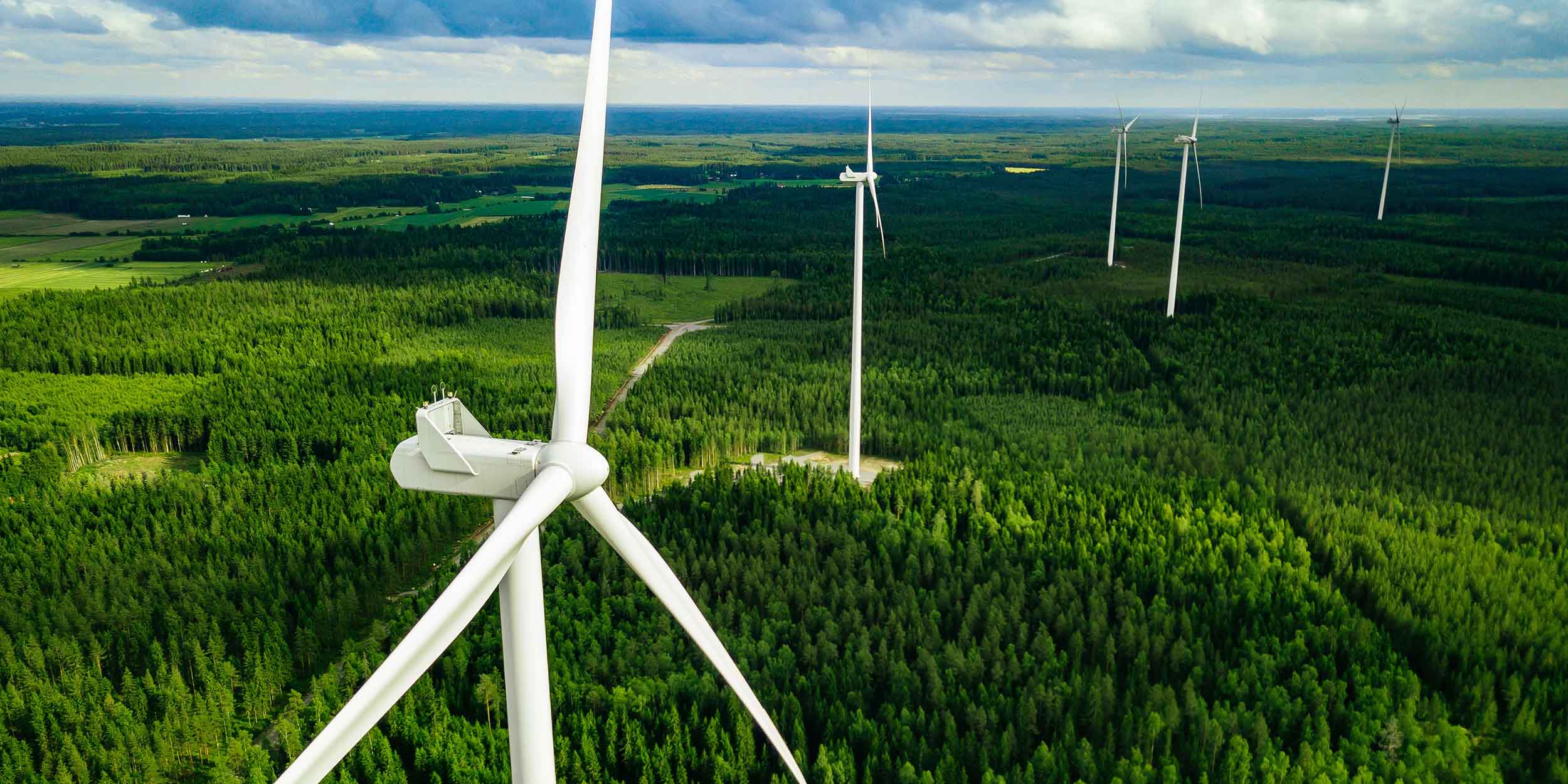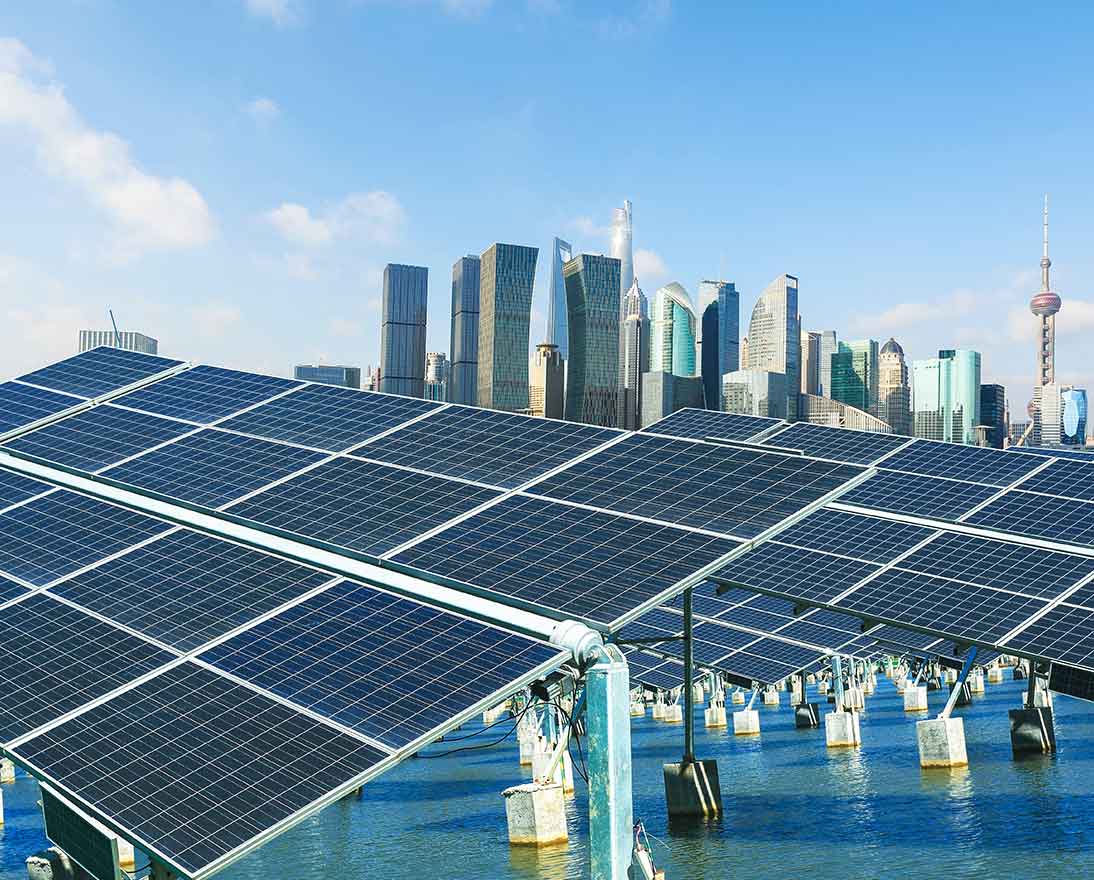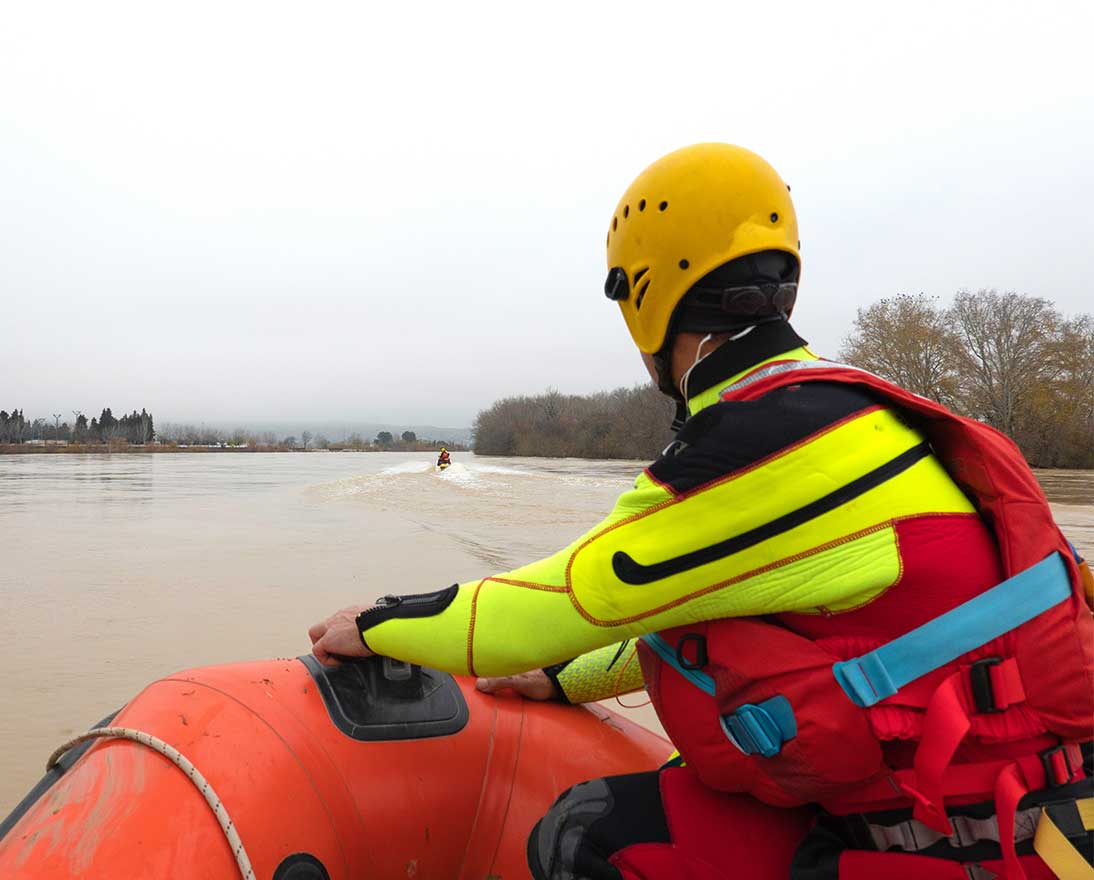Is hope of a net-zero future fading?
Climate resilienceArticleOctober 17, 2022
In the short term, it feels like countries are abandoning their energy transition plans and the goal of limiting global warming to under 2°C. But in the mid-to-long term, there is still of flicker of hope for a net-zero future.
The COVID-19 pandemic came with a silver lining: a fall in global energy demand that resulted in lower carbon dioxide (CO2) emissions. This was supported by an increase in renewable electricity generation and electric vehicle sales, while fossil fuel subsidies fell. A net-zero future seemed achievable. And even as emissions began to rise as economies emerged from lockdowns, there still remained optimism that if the world can come together to defeat a pandemic, then together we can also defeat another existential crisis: climate change.
But the latest global crisis does not yet appear to have a silver lining. Russia’s war on Ukraine has polarized the world, triggered energy and food crises, and is fueling a rise in global inflation and the cost of living.
And in terms of the climate crisis, the war has thrust the issue of energy security to the top of the political agenda at the expense of energy transition. This could exacerbate climate change.
One climate setback, for instance, is the rise in coal demand. Despite a slowing global economy and lockdowns in China, demand for coal is set to return to its all-time high in 2022 – matching the record set in 2013. An increase in consumption of this dirtiest of fossil fuels is being fueled by soaring natural gas prices, which have intensified gas-to-coal switching in many countries. In Europe, several countries are extending the life of coal plants scheduled for closure, reopening closed plants or raising caps on their operating hours to reduce gas consumption – which is in short supply after various actions by Russia to interrupt pipeline flow.
The Climate Change Scorecard
The Climate Change Scorecard, developed by Zurich Insurance Group (Zurich), reflects this more downbeat atmosphere. Split into 12 segments, the Scorecard measures 12 climate change-related areas that capture progress in three critical areas: policy, technology and broader societal trends.
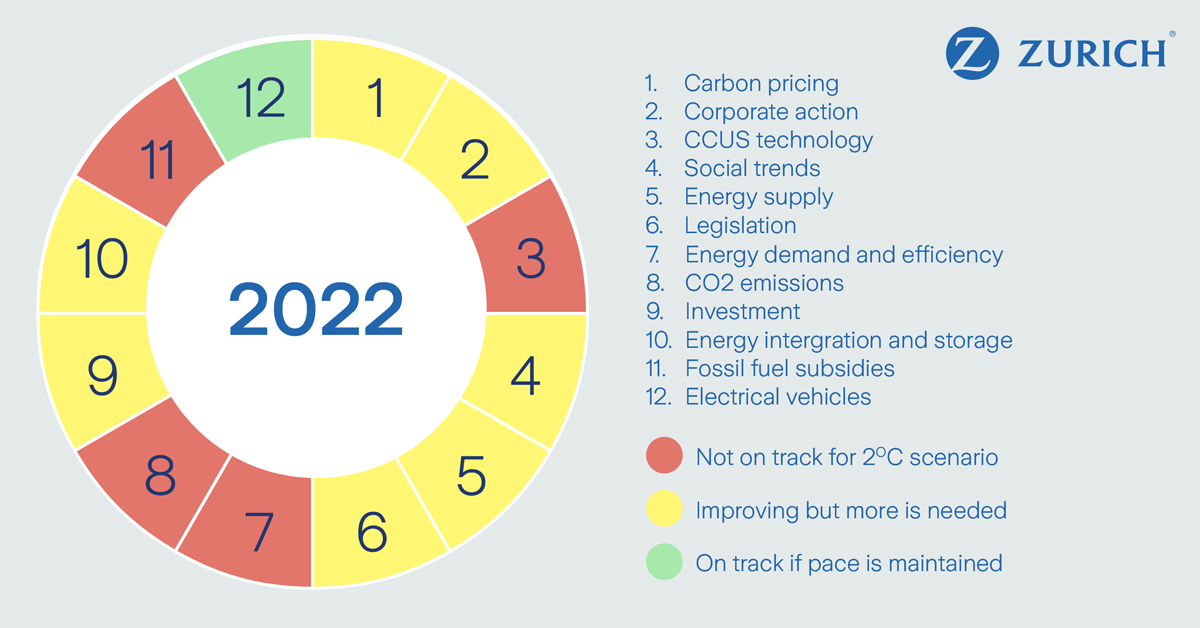
If it enables the world to limit global warming to less than 2 degrees Celsius (°C), then the segment is colored green. If it is not on track to achieve 2°C, but significant improvements are being made, it is colored yellow. If it is not on track for a 2°C scenario, it is red. Last year’s Scorecard had four green segments – the highest number since its inception in 2017 – and just one red. It provided plenty of reasons to feel optimistic in the fight against climate change, even if many of the improvements were expected to be temporary as they resulted from fall in economic activity and mobility during the global pandemic.
But in this year’s Scorecard, red outscores green. In fact, three of the four red segments in the 2022 Scorecard were green last year: fossil fuel subsidies; carbon dioxide (CO2) emissions; and energy demand and efficiency.
Back in the red zone
Fossil fuel subsidies are a roadblock to net-zero as they encourage greater consumption. In 2020, the global value of these subsidies (covering oil, electricity, natural gas and coal) fell 40 percent versus 2019. As a result, fossil fuel subsidies were colored green in the 2021 Scorecard. But as we predicted, it was just a short-term turnaround driven by the fall in fossil fuel demand and prices. Data from the OECD and IEA show that government support for fossil fuels across 51 countries worldwide almost doubled to USD 697 billion in 2021, up from USD 362 billion in 2020. Fossil fuel subsidies are once again red.
CO2 emissions rebounded in 2021 to reach their highest ever annual level – up 6 percent from 2020. Wiping out the 5.2 percent reduction in 2020 emissions in just 12 months.
Energy demand increased by 5.8 percent in 2021 and exceeded 2019 levels by 1.3 percent. The only positive is that the consumption of fossil fuels was broadly unchanged between 2019 and 2021 with the increase driven by renewable energy. Growth in energy demand was in line with 2021 global GDP growth of 5.9 percent highlighting there were no energy efficiency gains achieved. This partly reflects the fact that strong growth in 2021 was fueled by a surge in energy-intensive industrial activity during the pandemic recovery. This is why energy demand and efficiency have gone from green to red within 12 months.
“The world clearly did not heed the call for a sustainable recovery from the pandemic,” says Charlotta Groth, Global Macroeconomist at Zurich. “To have any chance of achieving net-zero we need to break the relationship between CO2 emissions and economic activity. This will require an unprecedented transformation of the global economy and, most importantly, the global energy system. And all this will require an enormous level of investment into new technologies and infrastructure.”
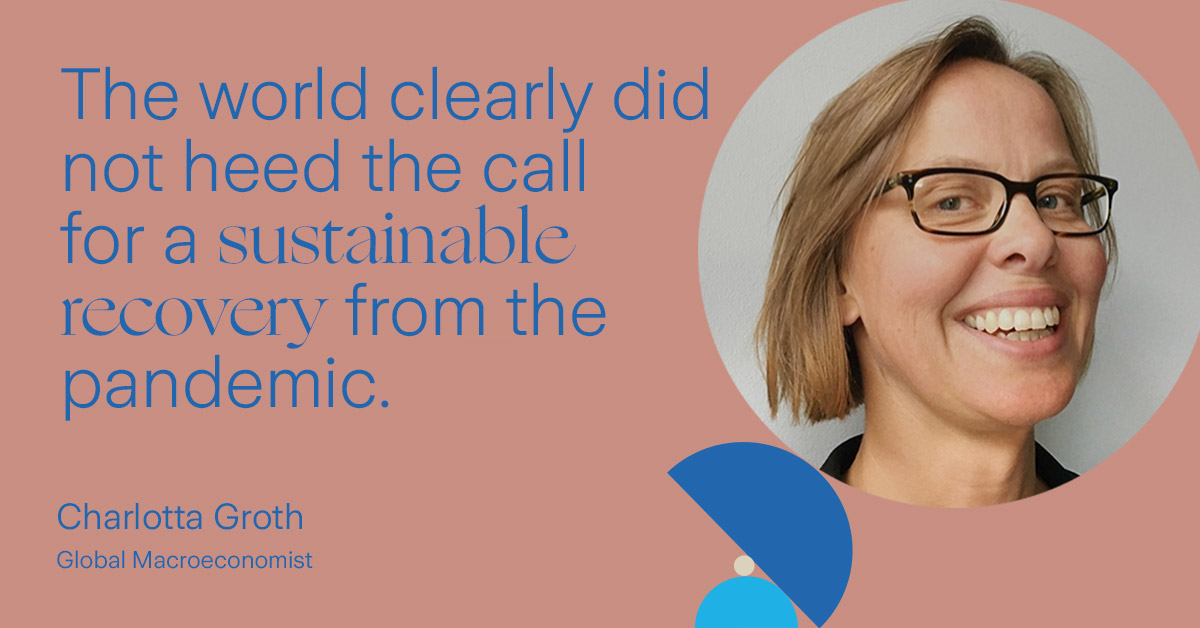
However, the fourth and final red segment in Zurich’s 2022 Scorecard – carbon capture, utilization and storage (CCUS) remains red. CCUS is one of those new technologies that will be required to enable the world to achieve net-zero and needs to be developed and scaled to abate emissions in the “hard-to-decarbonize” industries (such as steel, cement and glass manufacture) and to enable the production of blue hydrogen. CCUS needs to shift from red to green, and fast.
Reasons to be positive
However, it’s not all gloom and doom. Renewables-based power generation reached an all-time high in 2021, while sales of electric vehicles (EVs) – a key technology to decarbonize road transport – continue to see exponential growth. According to the IEA, if the growth in EV sales over the past two?years is sustained, CO2 emissions from cars will be on a path in line with its “Net Zero Emissions by 2050 Scenario.”
The IEA’s Sustainable Recovery Tracker also finds that clean energy spending earmarked by governments in response to the COVID-19 crisis now stands at over USD 710 billion worldwide as of April 2022. The IEA estimates that government spending up to 2023 could support over USD 1.6 trillion worth of sustainable investments by mobilizing higher levels of private sector participation.
“Countries where clean energy is at the heart of recovery plans are keeping alive the possibility of reaching net-zero emissions by 2050 but challenging financial and economic conditions have undermined public resources in much of the rest of the world,” says IEA Executive Director Fatih Birol.
Another reason to be optimistic, even though not highlighted in the Scorecard, is progress on nature-based solutions. The UNFCCC recognized the importance of nature-based solutions in both the Paris Agreement (2015) and the COP26 Glasgow Climate Pact (2021). According to the IPCC, restoration of ecosystems is one of the top five most cost-effective climate actions we can take by 2030.[2] Governments have also recognized nature-based solutions through the Leaders Pledge for Nature, signed by the heads of 93 states, and the 2021 G7 2030 Nature Compact. In the private sector, Business for Nature’s call to action, stating that “nature is everyone’s business,” has been signed by more than 1,100 companies with combined revenues of more than USD 5 trillion.
Even Russia’s invasion of Ukraine could provide a boost to long term climate goals. Energy security and energy transition may currently feel like divergent forces, especially as many countries have been forced to turn to coal. But in the mid-to-long term, the current energy crisis could have a positive impact on climate change.
Policymakers are realizing that developing renewables and other clean energy like nuclear and blue and green hydrogen is also a very effective energy security strategy as it reduces the need to import fossil fuels. Meanwhile higher oil and gas prices should also reduce demand – a trend that could stay long term.
“Near term, energy security and energy affordability are being prioritized at the cost of energy sustainability,” says Groth. “That said, elevated energy costs will help to drive improvements in energy efficiency, which should be visible going forward.”
At the Economist Sustainability Summit in March 2022, Secretary-General of the United Nations António Guterres said: “Instead of hitting the brakes on the decarbonization of the global economy, now is the time to put the pedal to the metal towards a renewable energy future.”
If the world follows his advice, then net-zero remains in our sights. Otherwise, a 1.5°C or 2°C future seems beyond us.
Sources:
Clean energy trends, Bloomberg NEF
BP Statistical Review
Datamaran
International Energy Agency (IEA)
IMF Data
MSCI
"State and trends of carbon pricing", World bank group
